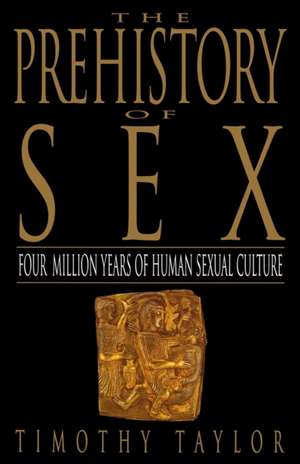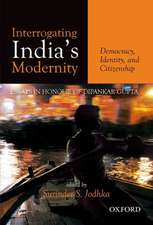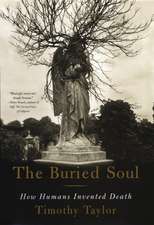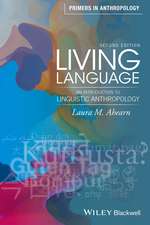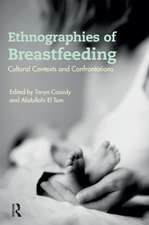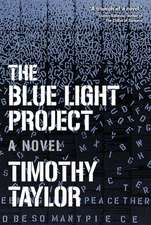The Prehistory of Sex: Four Million Years of Human Sexual Culture
Autor Timothy Tayloren Limba Engleză Paperback – 30 iun 1997
powerful subject.
Taylor draws on recent archaeological discoveries such as skeletons of Amazon women, golden penis sheaths, the charred remains of aphrodisiac herbs, and a
wealth of prehistoric erotic art to trace practices such as contraception, homosexuality, transsexuality, prostitution, sadomasochism, and bestiality back to their ancient origins. He makes the startling claim that although humans have used contraceptives from the very earliest times to separate sex from reproduction, techniques to maximize population growth were developed only when farming began--a revolution involving control of animals' sex lives, widespread oppression of women, and an attitude to nature that continues to have devastating ecological consequences. He draws the radical conclusion that the
evolution of our species has been shaped not only by the survival of the fittest but by the very sexual choices our ancestors made. And he links ancient sexuality with our own in a contemporary survey of artificial insemination, surrogate pregnancies, drag queens, brothels, pornography, and the spectre of racial dominance.
How has human sexuality changed--and how has it remained the same--over the span of millions of years? How did the ideas of eroticism, ecstasy, immortality, and beauty become linked to sex? Taylor explores these questions and sets out to prove that our sexual behavior is and has always been a matter
of choice rather than something genetically determined. He eloquently and accessibly explains how our sexual politics--issues of gender and power,
control and exploitation--are not new but are deeply rooted in our prehistory.
Surely one of the most illuminating and controversial books on human sexuality ever written, The Prehistory of Sex invites readers to become voyeurs into the bizarre--and so far hidden--prehistoric sexual world.
Preț: 120.87 lei
Nou
Puncte Express: 181
Preț estimativ în valută:
23.14€ • 25.14$ • 19.45£
23.14€ • 25.14$ • 19.45£
Carte disponibilă
Livrare economică 31 martie-14 aprilie
Preluare comenzi: 021 569.72.76
Specificații
ISBN-13: 9780553375275
ISBN-10: 055337527X
Pagini: 368
Dimensiuni: 153 x 226 x 22 mm
Greutate: 0.54 kg
Editura: Bantam Books
ISBN-10: 055337527X
Pagini: 368
Dimensiuni: 153 x 226 x 22 mm
Greutate: 0.54 kg
Editura: Bantam Books
Notă biografică
Timothy Taylor is a lecturer in Archaeology at the University of Bradford in the United Kingdom. He has presented his work on Down to Earth in an episode that won the British Archaeological Award for best popular archaeology on television in 1991-92. He has contributed numerous articles to Scientific American, Antiquity, and The Oxford Illustrated Prehistory of Europe.
Extras
This book tells a story in which biology is intertwined with culture. It is based on a vast body of archaeological evidence that is virtually unknown outside specialist circles: golden penis sheaths and graphic depictions of sex in prehistoric art, mammoth ivory phalluses, sculptures of women in childbirth, syphilitic skeletons, and the charred remains of aphrodisiac herbs. The story begins in the mists of evolutionary time, when the human form first emerged and sexual culture was invented. It ends by surveying the practices, prejudices, and confusions of the last five thousand years. It deals with sex in all its physical forms, as well as with reproduction, gender, and power--how societies have ordered themselves in relation to sex and sexuality.
Four million years ago in Africa, a small group of chimplike creatures began walking exclusively on their hind legs. The reason they did so is debated, but it marked a profound turning point, leading to the emergence of modern people. Our tree-swinging ancestors were very successful breeders. What they found erotic was probably quite varied: they may even have been as extreme as the pygmy chimps of today, who take their pleasure singly or in groups, often with no particular focus on reproduction, sometimes with members of their own sex or immediate family. However varied the behavior of our prehuman ancestors was, sex involved ideas of beauty, the physical basis of recognition and desire. Females had large clitorises and no breasts. Males had vanishingly small penises. Both sexes were covered with thick body hair. Then, somehow, what was considered beautiful altered dramatically. Upright walking hid the female genital opening and encouraged the development of buttocks. The evolution of the first female breasts followed, along with the loss of most of the thick body hair in males and females alike. The clitoris reduced in size, while the penis grew dramatically larger.
Natural selection--"the survival of the fittest"--cannot explain all these transformations. In the process of natural selection, a species facing an environmental challenge either changes or dies out. In any species change occurs because there is some variation among the individual members, and only those best fitted to the new conditions survive to pass on their characteristics. Generation by generation, over millions and millions of years, changes accrue that turn not only sheeplike creatures into giraffes but fish into reptiles, and reptiles into birds. As a species changes, it sometimes divides into two different species. When it does, the criteria of mutual recognition between individual members must slowly alter: giraffes share a common ancestry with okapi, but they no longer try to mate with them. As Darwin himself pointed out, however, natural selection alone cannot account for the fantastic variety of life on earth. The peacock's tail, for example, makes the peacock an easy target for predators. The critical compensation for this vulnerability and an important foundation for this book--is that peahens find it sexy.
Darwin recognized that certain characteristically human features, such as our lack of protective body hair (a stark contrast to our nearest primate relatives), make no sense in terms of basic survival. He proposed that "sexual selection" was the key to understanding them, arguing that the particular mate choices that individuals in a species make can be as crucial to evolution as pressures from the outside environment. In one form of sexual selection, brute force is used, almost always by males, to compete for the chance to mate with the opposite sex. A second, more important form of sexual selection is by the female, who usually makes the ultimate reproductive choice. Sometimes she may choose to conceive with a physically weaker but more astute and, in her eyes, more beautiful male while the brawny ones are still locked in battle.
Despite these relatively recent influences on our experience of sex, the last few thousand years represent just a tiny part of the four-million-year saga of its prehistory. By taking a long view of the evolution of human sexual culture--by seeing what people actually did, rather than making claims about what they ought to have done--we will be better able to consider our options for the next four million years.
Four million years ago in Africa, a small group of chimplike creatures began walking exclusively on their hind legs. The reason they did so is debated, but it marked a profound turning point, leading to the emergence of modern people. Our tree-swinging ancestors were very successful breeders. What they found erotic was probably quite varied: they may even have been as extreme as the pygmy chimps of today, who take their pleasure singly or in groups, often with no particular focus on reproduction, sometimes with members of their own sex or immediate family. However varied the behavior of our prehuman ancestors was, sex involved ideas of beauty, the physical basis of recognition and desire. Females had large clitorises and no breasts. Males had vanishingly small penises. Both sexes were covered with thick body hair. Then, somehow, what was considered beautiful altered dramatically. Upright walking hid the female genital opening and encouraged the development of buttocks. The evolution of the first female breasts followed, along with the loss of most of the thick body hair in males and females alike. The clitoris reduced in size, while the penis grew dramatically larger.
Natural selection--"the survival of the fittest"--cannot explain all these transformations. In the process of natural selection, a species facing an environmental challenge either changes or dies out. In any species change occurs because there is some variation among the individual members, and only those best fitted to the new conditions survive to pass on their characteristics. Generation by generation, over millions and millions of years, changes accrue that turn not only sheeplike creatures into giraffes but fish into reptiles, and reptiles into birds. As a species changes, it sometimes divides into two different species. When it does, the criteria of mutual recognition between individual members must slowly alter: giraffes share a common ancestry with okapi, but they no longer try to mate with them. As Darwin himself pointed out, however, natural selection alone cannot account for the fantastic variety of life on earth. The peacock's tail, for example, makes the peacock an easy target for predators. The critical compensation for this vulnerability and an important foundation for this book--is that peahens find it sexy.
Darwin recognized that certain characteristically human features, such as our lack of protective body hair (a stark contrast to our nearest primate relatives), make no sense in terms of basic survival. He proposed that "sexual selection" was the key to understanding them, arguing that the particular mate choices that individuals in a species make can be as crucial to evolution as pressures from the outside environment. In one form of sexual selection, brute force is used, almost always by males, to compete for the chance to mate with the opposite sex. A second, more important form of sexual selection is by the female, who usually makes the ultimate reproductive choice. Sometimes she may choose to conceive with a physically weaker but more astute and, in her eyes, more beautiful male while the brawny ones are still locked in battle.
Despite these relatively recent influences on our experience of sex, the last few thousand years represent just a tiny part of the four-million-year saga of its prehistory. By taking a long view of the evolution of human sexual culture--by seeing what people actually did, rather than making claims about what they ought to have done--we will be better able to consider our options for the next four million years.
Descriere
Piecing together evidence from highly controversial artifacts and human remains, "The Prehistory of Sex" leaves no stone unturned and no taboo untouched as it sets about to decipher the mysteries of Stone Age sex. Richly illustrated with more than 50 photos of "pornographic" cave art, sexual grave goods, and sensual sculptures, this provocative book describes the sexual culture of our ancestors from four million to five thousands years ago.
